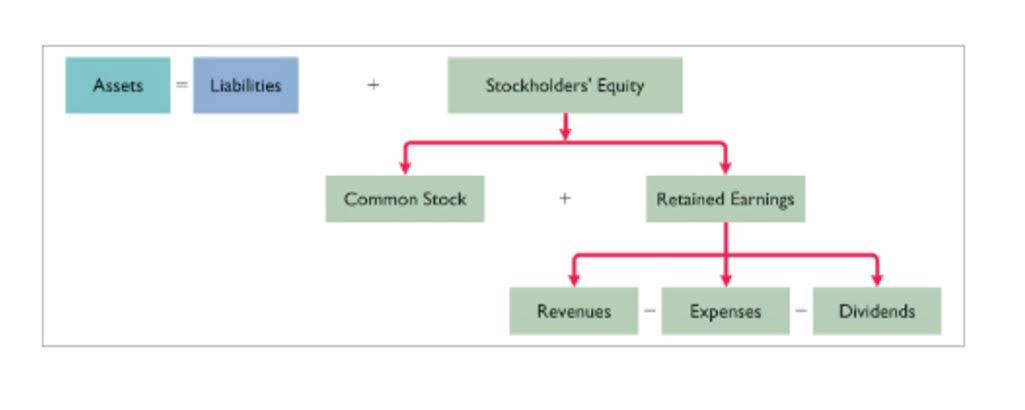Content

Access and download collection of free Templates to help power your productivity and performance. In either case, when a specific invoice is actually written off, this is done by creating a credit memo in the accounting software that specifically offsets the targeted invoice. Information how to write off bad debt about the Aspire Platinum Mastercard has been collected independently by CNBC Select and has not been reviewed or provided by the issuer of the card prior to publication. Below, we outline what kinds of debt forgiveness are not considered taxable, according to the IRS.
At CNBC Select, we work with experts who have specialized knowledge and authority based on relevant training and/or experience. For this story, we interviewed Leslie H. Tayne, a debt relief attorney and founder of Tayne Law Group. “Your credit may be temporarily damaged, but it will come back up quickly,” Tayne says. “Generally, it does work out in the debtor’s favor to settle the debt, especially if simply paying it off isn’t really an option.” When navigating these exemptions and exclusions, be sure to work with a certified tax professional with experience in debt settlement.
When the cost to collect outweighs bad debt
But since we generally make money when you find an offer you like and get, we try to show you offers we think are a good match for you. That’s why we provide features like your Approval Odds and savings estimates. It may take a few years, but eventually you’ll be able to claim the entire loss incurred on your tax returns.
Not everyone who calls saying that you owe a debt is a real debt collector. If the bad debt was included in your gross income, you can claim it with the IRS using the specific charge-off method or the nonaccrual-experience method. In most cases, you are required to use the specific charge-off method. Bad debt is when someone owes you money, but the debt becomes worthless (amounts to nothing) because you can’t collect it. When customers make purchases on credit, you expect them to pay you.
Most canceled debt is taxable
The first approach tends to delay recognition of the bad debt expense. It is necessary to write off a bad debt when the related customer invoice is considered to be uncollectible. Otherwise, a business will carry an inordinately high accounts receivable balance that overstates the amount of outstanding customer invoices that will eventually be converted into cash. There are two ways to account for a bad debt, which are noted below.
- Using the example above, let’s say a company expects that 3% of net sales are not collectible.
- They could also affect your credit scores, and they may involve fees that wipe out any savings from a lower rate or debt settlement offer that you get.
- For a totally worthless debt, you need to file by either seven years from the original return due date or two years from when you paid the tax, whichever is later.
- Two popular debt repayment strategies are known as the snowball and the avalanche methods.
- This is a good time to write off bad debt and clean up your A/R Aging report.
- For example, in one accounting period, a company can experience large increases in their receivables account.
Banks use write-offs, which are sometimes called “charge-offs,” to remove loans from their balance sheets and reduce their overall tax liability. If you spend more than you receive, your company will have negative cash flow. When you give a customer a good or service, you are spending money on the cost of goods sold (COGS) but not receiving anything in return. If you decide to continue offering credit to customers, you might consider changing your payment terms. Make sure the customer understands when their payment is due when you make the sale. Send payment reminders and reach out to late-paying customers.
How to Record Bad Debts
An allowance for doubtful accounts is considered a “contra asset,” because it reduces the amount of an asset, in this case the accounts receivable. The allowance, sometimes called a bad debt reserve, represents management’s estimate of the amount of accounts receivable that will not be paid by customers. If actual experience differs, then management adjusts its estimation methodology to bring the reserve more into alignment with actual results. When you record bad debt accounts using this method, the amount is a debit to your allowance for doubtful accounts. So, if you have a big non-business bad debt loss and capital gains that amount to little or nothing, it can take years to fully deduct the bad debt loss.

You should always do your best to make (at least) the minimum payment for every debt every month to help protect your credit scores. Yes, you can use a credit card or loan to pay for everyday needs like utilities, groceries, internet service and rent. The more important question is not if you can, but if you have to.
How to Report Non-Business Bad Debt on a Tax Return
If you provided the customer with goods or services in return for expected payment, or had a contract with them, it qualifies the debt as bona fide. Similarly, ABC Co. expects 12% of the remaining balance to be doubtful. As per this percentage, the estimated provision for bad debts is $12,000 ([$110,000 – $10,000] x 10%). The provision for the doubtful debt method occurs after the direct write-off approach. Once companies identify their bad debts, they will estimate their doubtful debts.
The seller can charge the amount of an invoice to the bad debt expense account when it is certain that the invoice will not be paid. The journal entry is a debit to the bad debt expense account and a credit to the accounts receivable account. It may also be necessary to reverse any related sales tax that was charged on the original invoice, which requires a debit to the sales taxes payable account. With the allowance method, you predict that you won’t receive payment for credit sales from all your customers. As a result, you debit bad debts expense and credit allowance for doubtful accounts.
Companies can’t deduct more than they write off on their accounting records for partially worthless debt. The accounts receivable aging method groups receivable accounts based on age and assigns a percentage based on the likelihood to collect. The percentages will be estimates based on a company’s previous history of collection.
- However, you must be prepared to show that partial worthlessness has occurred, and you must disclose the amount that you’ve actually charged off on your business’s books.
- More commonly, an individual’s bad debt loss does not arise in the course of the individual’s business.
- Make sure the customer understands when their payment is due when you make the sale.
- Then, in the next accounting period, a lot of their customers could default on their payments (not pay them), thus making the company experience a decline in its net income.
- And it’s not accounts receivables insurance or accounts receivables collections software.
- A collector has to give you “validation information” about the debt.
For a discussion of what constitutes a valid debt, refer to Publication 550, Investment Income and Expenses and Publication 535, Business Expenses. Generally, to deduct a bad debt, you must have previously included the amount in your income or loaned out your cash. If you’re a cash method taxpayer (most individuals are), you generally can’t take a bad debt deduction for unpaid salaries, wages, rents, fees, interests, dividends, and similar items. For a bad debt, you must show that at the time of the transaction you intended to make a loan and not a gift. It’s rare that debt settlement will let you off the hook for five-figure sums unless you can prove severe hardship, says Tayne. For instance, if you owed $30,000 in credit card debt and only offer to pay $10,000, it’s unlikely that your lender would accept this debt settlement offer.
What does filing for personal bankruptcy do?
More commonly, an individual’s bad debt loss does not arise in the course of the individual’s business. In this case, the loss is classified as short-term capital https://www.bookstime.com/articles/what-is-invoice-factoring loss. As such, it’s subject to the capital loss deduction limitations. You can first use a short-term capital loss to offset any capital gains from other sources.
